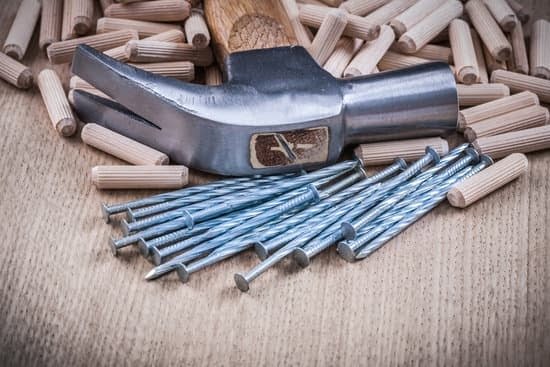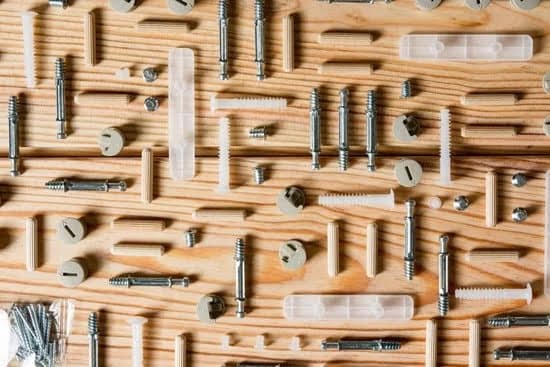A jigsaw woodworking tool is a versatile and essential equipment for any woodworking enthusiast. From making straight cuts to intricate curves, this power tool offers precision and flexibility for various projects. In this article, we will delve into the basics of the jigsaw woodworking tool, including its types, blade selection, safety tips, and maintenance guidelines.
When it comes to jigsaw woodworking tools, there are three main types to consider: corded, cordless, and pneumatic options. Each type has its own set of advantages and limitations, so understanding the differences can help you make an informed decision based on your specific needs and preferences. Whether you prioritize mobility with a cordless option or require more power with a corded model, there is a jigsaw woodworking tool for every workshop.
In addition to choosing the right type of jigsaw woodworking tool, selecting the appropriate blade is crucial for achieving clean and precise cuts. Different materials and cutting tasks may require specific blade types, so knowing how to match the blade to the job at hand is essential for optimal results. Stay tuned as we explore these topics in detail and provide insights on maximizing your jigsaw woodworking tool‘s potential.
Types of Jigsaw Woodworking Tools
When it comes to woodworking tools, the jigsaw is a versatile and essential addition to any workshop. The jigsaw allows for intricate cuts and curves that other power saws cannot achieve, making it a popular choice among woodworkers.
One of the key decisions to make when choosing a jigsaw woodworking tool is whether to opt for a corded, cordless, or pneumatic option. Each type has its pros and cons, so understanding the differences can help you make the right choice for your specific needs.
Corded Jigsaws
Corded jigsaws are powered by an electrical cord that needs to be plugged into an outlet. These jigsaws provide consistent power output, making them suitable for heavy-duty cutting tasks. They are generally more powerful than cordless options and are preferred by professionals who require continuous operation without having to worry about battery life. However, the drawback of corded jigsaws is that they limit your mobility due to the cord’s length and the need for a power source.
Cordless Jigsaws
On the other hand, cordless jigsaws are powered by rechargeable batteries, offering greater portability and freedom of movement compared to corded models. They are ideal for jobs where access to a power outlet may be limited or where maneuverability is essential. Cordless jigsaws are convenient for small projects or DIY enthusiasts who do not require prolonged usage periods. However, they may have limited run time depending on the battery capacity and can lose power as the battery drains.
Pneumatic Jigsaws
Pneumatic jigsaws operate using compressed air as their power source. These tools are typically lightweight and produce less vibration during operation compared to their electric counterparts. Pneumatic jigsaws are often used in professional settings where precise cuts are crucial, such as in metalworking or automotive industries. However, they require an air compressor to function, which adds an extra cost and limits their portability compared to cordless options.
Choosing the Right Blade for Your Jigsaw
When it comes to using a jigsaw woodworking tool, choosing the right blade is essential for achieving clean and precise cuts. With a variety of blades available in the market, selecting the appropriate one for different materials and cuts can make a significant difference in the outcome of your project. Here is a guide on how to choose the right blade for your jigsaw:
- Consider the Material: Different materials require specific types of blades. For example, wood, metal, plastic, or laminate will each need a different blade designed for that particular material. Make sure to match the blade to the material you are working with to optimize cutting performance.
- Teeth Per Inch (TPI): The TPI refers to the number of teeth on the blade per inch. Higher TPI blades are better suited for making fine cuts in materials like plywood, while lower TPI blades work well for faster cuts in thicker materials like lumber. Choose a blade with the appropriate TPI based on your project requirements.
- Tooth Configuration: Blades come with various tooth configurations such as wavy set, alternate set, or progressive set. The tooth configuration affects how aggressively the blade cuts through the material. Consider the type of cut you need – whether it’s straight or curved – and select a blade with a suitable tooth configuration.
By understanding these factors and taking them into consideration when choosing a blade for your jigsaw woodworking tool, you can ensure efficient cutting results and prolong the lifespan of both your blade and tool.
- Thickness of Material: Thicker materials require blades with more teeth per inch (TPI) to maintain precision during cutting.
- Cut Depth: For making deep cuts, opt for longer blades that can accommodate the thickness of the material without causing any issues.
- Specialized Blades: In addition to standard blades, there are specialized options available for specific tasks like scroll cutting or plunge cutting. Investing in these blades can enhance your jigsaw’s versatility and performance.
Remember to always follow manufacturer recommendations and guidelines when selecting blades for your jigsaw woodworking tool to ensure safety and efficiency while working on your projects.
Essential Safety Tips for Using a Jigsaw
Using a jigsaw woodworking tool can be incredibly versatile and efficient, but it is essential to prioritize safety when operating this power tool. Here are some essential safety tips to help prevent accidents and ensure a smooth operation with your jigsaw.
Wear Proper Safety Gear
Before starting any project with a jigsaw, make sure you are wearing the appropriate safety gear. This includes safety glasses to protect your eyes from flying debris, ear protection to prevent hearing damage from the loud noise of the tool, and gloves for a better grip and reduced risk of cuts.
Secure Your Workpiece
One common cause of accidents with jigsaws is when the workpiece moves or shifts while cutting. To prevent this, always secure your workpiece firmly in place using clamps or a vise. Make sure it is stable before turning on the jigsaw to avoid any unexpected movements that could lead to injuries.
Follow Proper Cutting Techniques
When using a jigsaw, it’s crucial to follow proper cutting techniques to maintain control and accuracy. Use both hands to hold the tool securely and guide it along the cut line smoothly. Avoid forcing the blade through the material, as this can result in kickbacks or blade breakage. Always let the jigsaw do the work at its own pace for safer and more precise cuts.
By following these essential safety tips when using a jigsaw woodworking tool, you can minimize risks and ensure a successful woodworking project. Remember that safety should always be a top priority when working with power tools like a jigsaw to enjoy your craft without any accidents or injuries.
Step-by-Step Guide for Using a Jigsaw
The jigsaw woodworking tool is a versatile and valuable addition to any woodworking enthusiast’s toolkit. When it comes to using a jigsaw effectively, following a step-by-step guide can help you achieve precise cuts and professional results. Whether you are a beginner or experienced woodworker, understanding how to set up the tool correctly and make accurate cuts is essential for successful projects.
To start, before using your jigsaw, make sure it is fully charged if cordless or properly plugged in if corded. Adjust the speed settings on the tool based on the material you are cutting – higher speeds are ideal for softer materials, while lower speeds work better for harder woods. Additionally, choose the appropriate blade for your project by considering the type of cut (straight, curved, or beveled) and the material you are working with.
Once your jigsaw is set up and ready to go, secure the material firmly in place using clamps or a workbench to prevent any movement during cutting. Hold the jigsaw with both hands and begin by making small pilot holes for intricate cuts or plunge directly into the material for straight lines.
Remember to follow your cutting line closely while maintaining a steady pace to avoid splintering or inaccuracies in your cuts. With practice and attention to detail, you can master using a jigsaw for various woodworking projects.
| Key Steps | Details |
|---|---|
| Preparation | Ensure tool is charged/plugged in; adjust speed settings; select appropriate blade |
| Safety Measures | Secure material; wear safety goggles and gloves; maintain focus on cutting line |
| Cutting Technique | Start with pilot holes for intricate cuts; follow cutting line closely with steady movements |
Advanced Techniques With a Jigsaw
A jigsaw woodworking tool is a versatile power tool that can be used for more than just straight cuts. With the right techniques, you can create intricate designs, curves, and unique shapes that add a touch of creativity to your woodworking projects. Here are some advanced techniques to help you get the most out of your jigsaw:
- Curved Cuts: One of the most common advanced uses for a jigsaw is creating curved cuts. To achieve smooth and precise curves, start by marking your desired curve on the material. Use a slow speed setting on the jigsaw and guide the blade along the marked line, making small adjustments as needed to follow the curve accurately.
- Scrollwork: If you want to add decorative scrollwork to your project, a jigsaw can help you achieve intricate patterns with ease. Start by securing your workpiece firmly in place and use a fine-toothed blade for detailed cuts. Take your time and practice control over the tool to create beautiful scroll designs.
- Pocket Holes: Jigsaws can also be used to create pocket holes for joinery purposes. By carefully cutting out a small hole at an angle, you can create hidden joints that provide strength and stability to your woodworking projects. Use a jig or guide to ensure consistent depth and angle for precision.
By mastering these advanced techniques with your jigsaw woodworking tool, you can take your woodworking skills to the next level and unleash your creativity in new ways. Experiment with different materials, blade types, and cutting methods to discover what works best for your specific projects. Remember to always prioritize safety by wearing appropriate protective gear and following proper operating procedures when using a jigsaw for advanced cuts and designs.
Maintenance and Care for Your Jigsaw
Jigsaws are versatile and powerful tools that can handle a variety of cutting tasks in woodworking projects. To ensure that your jigsaw remains in top condition for prolonged use, proper maintenance and care are essential. Here are some key tips to keep your jigsaw functioning optimally:
First and foremost, it is crucial to regularly clean your jigsaw after each use. Sawdust, resin, and other debris can build up on the tool, affecting its performance over time. Use a brush or air compressor to remove any residue from the blade guard, base plate, and motor housing. Additionally, make sure to lubricate any moving parts according to the manufacturer’s instructions to prevent wear and tear.
Another important aspect of maintaining your jigsaw is checking the blade alignment regularly. A misaligned blade can result in inaccurate cuts and put unnecessary strain on the motor. Use a square or straight edge to ensure that the blade is perpendicular to the base plate. If adjustments are needed, refer to the tool’s user manual for guidance on realigning the blade properly.
Lastly, store your jigsaw in a clean and dry environment when not in use. Moisture and dust can cause rust to form on metal components, leading to corrosion and decreased functionality. Consider investing in a protective case or carrying bag to shield your jigsaw from external elements when transporting it between job sites.
| Maintenance Tip | Description |
|---|---|
| Regular Cleaning | Remove sawdust and debris with a brush or air compressor after each use. |
| Blade Alignment Check | Ensure that the blade is perpendicular to the base plate by using a square or straight edge. |
| Proper Storage | Keep your jigsaw in a clean and dry environment to prevent rust formation and corrosion. |
Jigsaw Woodworking Tool Accessories
In conclusion, the jigsaw woodworking tool is a versatile and essential piece of equipment for any woodworker, whether novice or experienced. By understanding the basics of this tool, such as the different types available – corded, cordless, and pneumatic options – users can choose the one that best suits their needs. Additionally, selecting the right blade for specific materials and cuts is crucial to achieving accurate and clean results in woodworking projects.
Moreover, ensuring safety while using a jigsaw is paramount. Following essential safety tips can prevent accidents and injuries, making the woodworking process smooth and efficient. With a step-by-step guide on how to properly set up the tool and make precise cuts, woodworkers can maximize the potential of their jigsaw for various projects.
Frequently Asked Questions
What Is a Jigsaw Used for in Woodworking?
A jigsaw is a versatile tool used in woodworking for cutting intricate shapes and curves in wood. It is commonly used for making straight cuts, beveled cuts, and plunge cuts. The jigsaw’s ability to cut different patterns makes it an essential tool in creating detailed wood projects.
Are Jigsaws Good for Cutting Wood?
Jigsaws are indeed good for cutting wood, especially when it comes to making curved or irregular cuts that other saws cannot accomplish easily. Their maneuverability and ability to cut through various thicknesses of wood make them a valuable tool in any woodworker’s arsenal.
How Thick of Wood Can You Cut With a Jigsaw?
The thickness of the wood that can be cut with a jigsaw depends on the type of blade being used and the power of the tool itself. In general, most jigsaws are capable of cutting through wood up to 2 inches thick, but with the right blades and proper technique, thicker pieces can be managed as well.
It is important to choose the correct blade and adjust the speed settings according to the type and thickness of wood being cut for optimal results.

Hi everyone! I’m a woodworker and blogger, and this is my woodworking blog. In my blog, I share tips and tricks for woodworkers of all skill levels, as well as project ideas that you can try yourself.





